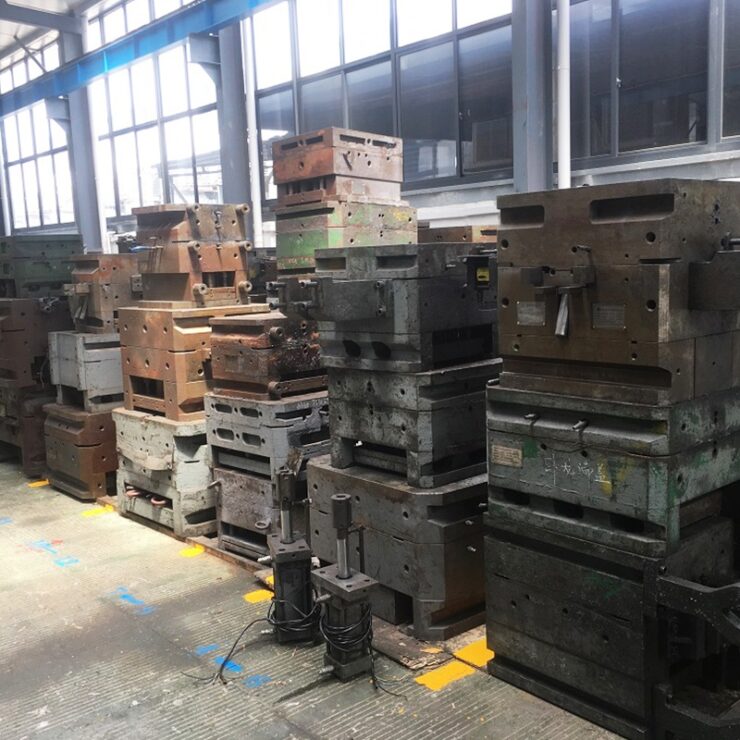Ways to prevent the phenomenon of die-casting mold sticking:
1. Check whether the mold temperature is normal, and appropriately reduce the alloy liquid pouring temperature and mold temperature;
2. Check if the ratio of the release agent is abnormal, try to replace the release agent, adjust the spraying position and spraying amount;
3. Polish the surface of the die-casting mold, and carefully polish the mold that has been nitrided to prevent damage to the nitride layer on the surface, resulting in a situation that becomes more sticky as it is polished;
4. Improve the design structure of the gating system to avoid the continuous erosion of the cavity wall or core by the alloy liquid;
5. Modify the mold cooling system, adjust the die-casting process parameters, appropriately reduce the injection speed, and shorten the two-speed stroke;
6. Try to grind a few horizontal grooves on the movable mold, 0.2-0.3mm is enough, the die castings will appear to be drawn very brightly and will not be damaged. This can increase a lot of packing force on the movable mold side and bring the die-casting parts to the movable mold.
Eliminate the stress generated in the die casting mold:
There are many factors that affect the life of die-casting molds. The die-casting mold factory has summarized a variety of methods that can improve the service life of zinc-aluminum alloy die-casting products, such as reasonable surface treatment and stress relief. The following is a detailed introduction of stress relief methods Improve life.
When die-casting molds, there will be a temperature difference on the surface of the mold. Due to the temperature difference, thermal strain may sometimes occur. If this thermal strain is repeated multiple times, it will cause residual stress on the surface of the zinc-aluminum alloy die-casting. In most cases, this residual stress is Tensile stress will cause thermal cracking of aluminum alloy die-casting molds. If the stress can be eliminated, the residual tensile stress of the die-casting mold can be reduced, and the life of the aluminum alloy die-casting mold can be improved from the surface.
After knowing that the thermal cracking of zinc-aluminum alloy die-casting is caused by stress, the die-casting mold factory has researched and found a corresponding solution, that is, stress relief treatment after a period of trial time, such as die-casting 1000-2000 die Relieve stress after 5,000-10,000 mold times. This treatment can be repeated every 10,000-20,000 mold times in the future to achieve the goal of minimizing thermal cracking in aluminum alloy die-casting molds.
The die-casting mold factory warmly reminds that when performing stress treatment, the temperature is preferably about 25°C below the maximum tempering temperature of the heat treatment. Under normal circumstances, keep it at this temperature for 2 hours.
Prevention of soft spots on the surface of die-casting molds:
After the heat treatment of the zinc-aluminum die-casting mold, there are soft spots on the surface. This phenomenon is extremely common, which will affect the wear resistance of the mold and reduce the service life of the mold.
Cause: There are oxide scales, rust spots and local decarburization on the surface of the mold before heat treatment. After the mold is quenched and heated, the cooling and quenching medium is not properly selected, and there are too many impurities or aging in the quenching medium.




























